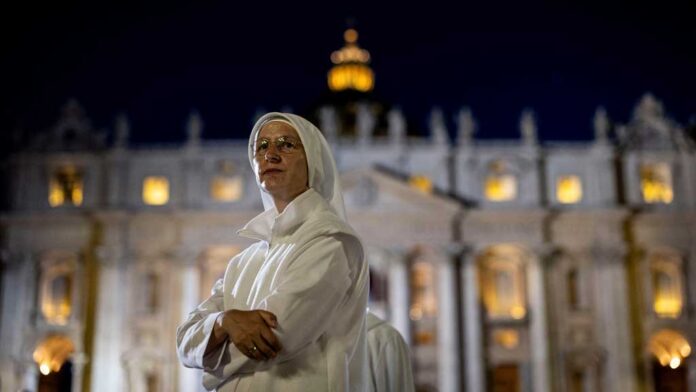Roman Catholic cardinals will begin the process of selecting a new pope on Wednesday, secluding themselves from the outside world as they undertake the sacred responsibility of choosing a leader they hope will unify a globally diverse yet divided Church.
In a centuries-old tradition, the cardinals will enter the Sistine Chapel following a public Mass at St. Peter’s Basilica to commence the secretive conclave to elect a successor to Pope Francis, who passed away last month.
A papal election hasn’t concluded on the first day in modern history, so voting is expected to span several days. A two-thirds majority is required for a cardinal to become the 267th pope.
Only one round of voting will occur on Wednesday. From Thursday onward, the cardinals may vote up to four times daily. Black smoke from the chapel chimney will indicate no decision, while white smoke and ringing bells will announce the election of a new pontiff for the 1.4 billion-member Church.
The papacy’s global influence extends well beyond Catholicism, often serving as a beacon of moral authority in world affairs.
Cardinals have voiced differing expectations for the next pope. While some support a continuation of Francis’ emphasis on openness and reform, others favor a return to traditional practices, seeking a more stable and measured papacy.
This conclave includes a record 133 cardinals from 70 nations—an increase from 115 from 48 countries in 2013—reflecting Pope Francis’s effort to broaden the Church’s global representation.
There is no clear front-runner, but Italian Cardinal Pietro Parolin and Filipino Cardinal Luis Antonio Tagle are considered leading candidates. Should neither gain sufficient support, the votes may shift toward other contenders based on regional, doctrinal, or linguistic affiliations.
Other possible candidates include Jean-Marc Aveline of France, Peter Erdo of Hungary, Robert Prevost of the U.S., and Pierbattista Pizzaballa of Italy.
“Wait and see. It takes some patience,” Italian Cardinal Mario Zenari told reporters on Tuesday.
To preserve the conclave’s secrecy, the cardinals will be completely cut off from external communication, with the Vatican employing signal-jamming technology to prevent any surveillance.
Historically, the average length of the past 10 conclaves has been just over three days, with none lasting more than five. The 2013 conclave that elected Francis concluded in just two days.
There is an urgency to reach a decision swiftly to avoid perceptions of disunity or a leadership vacuum within the Church.
With around 80% of the electing cardinals having been appointed by Francis, his successor is expected to reflect, at least partially, his progressive agenda, despite resistance from conservative factions.
Among the considerations is whether to choose a pope from the growing Catholic communities in the global South, as was the case with Francis from Argentina, or to shift leadership back to Europe, or even elect the first pope from the United States.



